
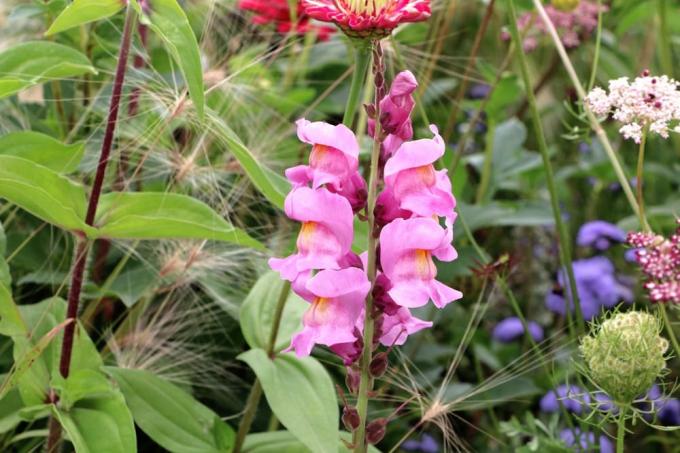
Table of contents
- Are snapdragons hardy?
- Perennial perennials overwinter
- pruning
- Cover
- neighboring plants
- Protected locations
- Protection from below and the sides
- stop fertilizing
- Dig out
When raising snapdragons, it is now common practice to remove the plants after the end of the flowering phase and to replace them with new young plants in the new year. But does that have to be the case? How hardy is the snapdragon and how do you get it safely through the cold months? We will tell you all the important information about winter hardiness and overwintering options.
Are snapdragons hardy?
Although this question can be answered with yes or no for numerous other plants, the general answer for snapdragons is “it depends”. Originally, the Antirrhinum, the scientific name of the snapdragon, is a perennial and at least moderately hardy perennial. Anyone who is lucky enough to own such a specimen can, with a little effort, also bet on a rich bloom in the coming year.
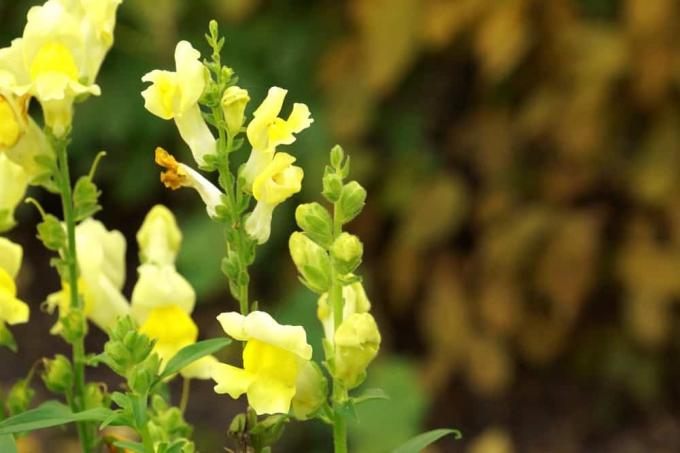
In contrast, many of the cultivated forms offered today are what are known as F1 hybrids. They are bred exclusively for the purpose of strong growth and enormous flowering. The lifespan is therefore usually limited to just one season anyway, so that the winter hardiness that has disappeared in the course of breeding is no longer of great importance.
A NOTICE:
You can find out what kind of snapdragon it is from your gardener. When purchased from a hardware store or garden store, information about the winter hardiness is usually included in addition to the affiliation to the F1 hybrid.
Perennial perennials overwinter
If you are lucky enough to actually have a perennial snapdragon perennial in your garden, the chances of overwintering are usually very promising. These measures will help to safely overwinter the plant until the coming spring:
pruning
Although many gardeners tend to remove faded and wilted plants in the fall, pruning should be avoided here. The dead leaves perform several functions in winter:
- Protection of the plant stem from wind and consequent frostbite
- Protection of the root area against intense ground frost
- Fallen leaves or leaves lowered to the ground as evaporation protection against drying out in wintry winds
Cover
An extra protective layer will help protect the plants from the winter cold. Above all, it is important to protect the sensitive roots, while the above-ground parts of the plant sprout again in spring anyway. Suitable materials for the protective cover are:
- coconut bast mats
- brushwood
- mulch
- leaves
- straw
DANGER:
Airtight covers, such as foils, on the other hand, should be avoided as far as possible. Although they also protect against evaporation and cold, moisture can accumulate under them and thus promote the formation of rot and mold.
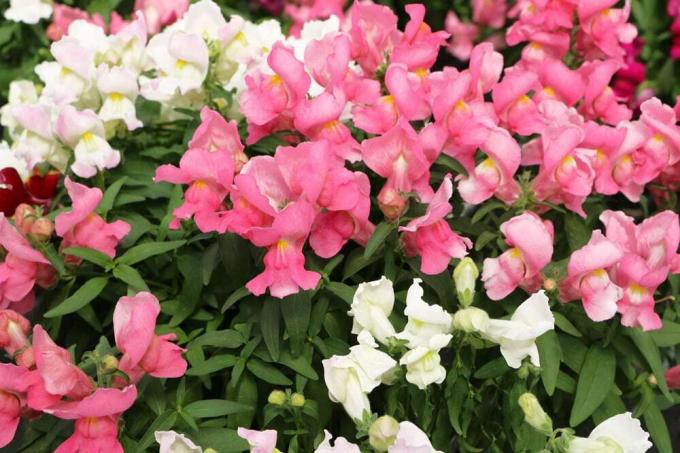
The covers can be carried out independently of the planting in the bed or pot. In smaller pots, a handful of leaves from nearby shrubs can be enough to protect the roots from above.
neighboring plants
Although snapdragons love the sun, it can be wise to plant them in the company of taller perennials or shrubs. The partially overhanging branches of these neighbors can provide some protection from the wintry chill of starry nights.
Protected locations
Anyone who pays attention to a protected location when planting the snapdragons has already done a lot in terms of winter protection. Above all, protection against the wind, but also the heat radiation from nearby buildings contribute to a successful winter. Examples of good options are:
- Plant beds near the building
- Location in the eaves area of bins, garages or sheds
- Location on the leeward side of privacy screens, tool sheds, etc.
The protective effect of a well-chosen location can be used even better if the plants are kept in a plant trough or flower pot. The pots can then simply be pushed against the house wall or spend the winter under a protective patio cover.
Protection from below and the sides
While snapdragons do not need any protection from below in the plant bed, the cold that is present on all sides of potted plants poses a real danger to the sensitive roots. Therefore, place flower pots on a styrofoam plate or a mat made of raffia or coconut fibers over the winter. They keep out the cold coming from below and effectively complement the protective measures. The same applies to the sides of the pot if the remaining soil around the roots does not provide sufficient protection. Coconut mats or even bubble wrap can help effectively here.
stop fertilizing
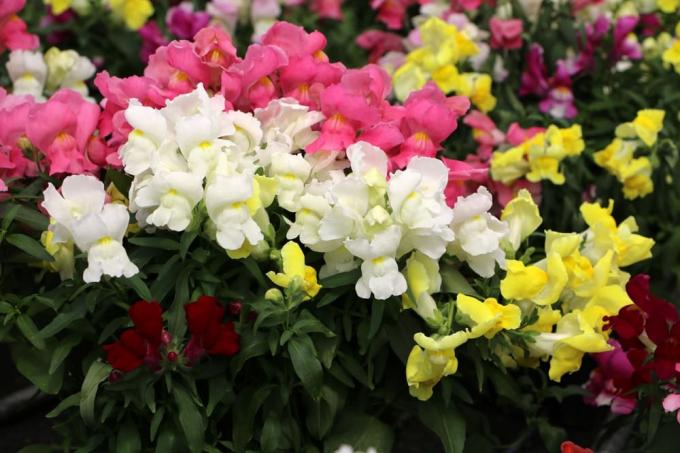
Those who fertilize their plants usually mean well with them. For a successful hibernation, however, you should stop fertilizing the snapdragon in September. This reduces the growth drive and the plant matures and prepares itself for hibernation. Particularly susceptible new shoots on branches and roots are no longer formed.
Dig out
Again and again one hears that snapdragons can be dug up together with their root ball and overwintered in the cellar in particularly cold locations. In fact, this method works, but the plants are significantly weakened and react with less growth and less flowering in the following year. When storing in the basement, the following should be observed:
- Keep roots moist, if necessary protect against intensive evaporation
- Avoid waterlogging, e.g. B: by laying on straw
- Store in the dark, otherwise growth will begin due to higher temperatures without sufficient supply
 garden editorial
garden editorial I write about everything that interests me in my garden.
Learn more about plant overwintering

Is the triplet flower hardy? 10 tips for wintering
The enchanting bougainvillea got its botanical name after its discoverer, the navigator Louis de Bougainville. On the Mediterranean Sea, it embellishes house facades. In Germany, where it is also known as a triplet, it is particularly popular as a container plant. How is it overwintered?

Overwintering poinsettia | Is he hardy?
The poinsettia belongs to the winter season like no other plant. But is it also a plant that is hardy or does it have special requirements when it comes to overwintering? The answers can be found at Hausgarten.net.

Ranunculus hibernate: this is how it works | Are ranunculus hardy?
Ranunculus is a beautiful flower, but it is only partially hardy in the local latitudes. Therefore, outdoors, the plant is dependent on warm protection in order to survive low frost temperatures without damage. Alternatively, you can overwinter the tubers in a frost-free place.
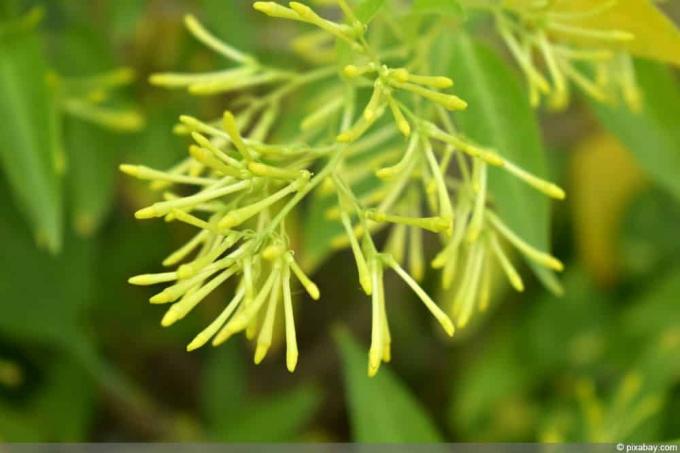
Night jasmine, Cestrum nocturnum - care and wintering
The night jasmine has developed into a popular container plant in this country. One reason for this is certainly its beautiful trumpet flowers, which unfold like a star. In order for this to work, however, it depends on the right location and care. More about this is here.

Is the Japanese maple hardy? This is how you overwinter it properly
The Japanese maple is so popular in the local latitudes because it can be cultivated in the garden and in a bucket. Because the tree has its origin in the Japanese mountain regions, where there is a similar climate. It is therefore not difficult to get the plant through the winter well.

Overwintering lemon verbena from A-Z | Is Lemon Shrub Hardy?
One of the most refreshing scents in the home herb garden comes from lemon verbena. Growing them is worth it for that alone. Whether in a bed or in a bucket, it thrives everywhere in summer. Only the cold winter reveals its distant origin. What now?
